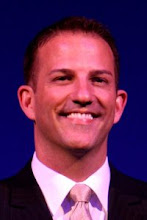It is clear within the Event Entertainment industry that planners and producers must deliver exceptional entertainment that offers a return on investment for the client and attendees. A company cannot be seen as spending lavishly on fancy events. They must be able to educate their attendees in an entertaining yet efficient way. Companies are still producing events because they generate revenue. Events also help to build relationships with clients and peers. In my research for live entertainment trends in the event industry, I came across an interesting article from Corporate and Incentive Travel Magazine. I thought I would share my findings on some trends in the industry for 2011.
The first trend relates to having an engaging and educational event. Many entertainment planners are developing shows that are customizable which have proven to deliver the intended message in an entertaining way. For instance, a Broadway musical filled with familiar tunes can make an immediate connection with corporate groups. After all, these songs are the cultural fabric of our society and can help soothe and comfort in difficult times. It is important to understand who your audience is and customize the show to them; the client’s demographics, interests, corporate philosophy, marketing plans and any other relatable data. Only while utilizing this essential information can planners begin their quest for the most effective entertainment experience.
Barbara Edwards, founder and CEO of California Host, an event company based in San Francisco did just that. She created a unique activity that entertained a technology company’s 300 sales executives from around the world while simultaneously educating them about sales themes and San Francisco sites.
Edwards organized attendees into groups of eight people to visit famous sites throughout the city to hunt for clues to the company’s five new sales themes. Each site provided a clue to the themes, and each clue was intrinsically connected to the location. For example, the height of the Transamerica building related to the idea of setting high goals. Other sites such as Knob Hill and Fisherman’s Wharf had their own unique clues. At each location, one of Edwards’ staffers provided a clue to the next site that team members would visit.
It was a smash hit. “We didn’t expect more than half of the participants to actually complete it. But every attendee participated in the event and finished it, and they had nothing but good things to say about it afterwards,” Edwards said (www.themeetingmagazines.com).
In my work as a Producer for The Disney Event Group, we understand the importance of delivering the message in an entertaining way. Our events must ensure that the attendees walk away with the right message. Yes, they must have a great time and build relationships, but most importantly they must walk away with the right message. We are always interested in new ways to engage, educate, and entertain our guests at Walt Disney World. I wonder what new technologies related to entertainment will impact the future. It is clear that continued innovation and creativity will be the keys to success in the events industry.
References
